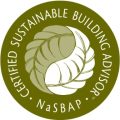Thanks for following my blog about how to reduce the risk and cost of disputes in construction projects. Today’s post explores strategies to apply when you find yourself in a formal claim / dispute. A friendly reminder – This is not legal advice. This post offers practical approaches to minimize the duration and cost of an unavoidable dispute.
If you have been following this blog series, you know that we have covered a lot of ground on our discussion of dispute risk from the due diligence phase all the way through design, pricing, contracting and construction. In each post we explored a philosophy about the sources of risk in that phase, outlined strategies to address each risk and provided specific tips to deploy those them.
Choose your battles carefully…
This is not to say that the strategies you currently use are flawed or that you might not prevail if you went the distance in a dispute. But in most cases, even a winnable fight is probably not worth your time and energy and is certainly not profitable.
Even disputes that go the distance in a formal hearing can result in split verdicts regardless of fault. The vast majority of disputes are settled outside of a formal hearing and the parties are equally disappointed in the settlements reached. So, as my fellow 80’s movie fans will appreciate, you don’t have to get to DEFCON 1 to realize the best way to “win” is “not to play”. Hence the preventative nature of the strategies and tips proposed.

So, first let’s recap the prior posts and explore the outcomes we are targeting at each phase. Then I will summarize how these outcomes come into play when pursuing settlement and/or formal dispute resolution.
Our hard work pays dividends:
-
8 frames of reference provided a method to evaluate if you should invest in information or employ another strategy to mitigate a project risk. If you made a list of low information risks, chances are you either invested in the information necessary to define the scope and contracted the risk, prepared a contingency, or determined it was not enough of a risk to warrant additional cost or effort.
-
3 best practices in design. If you formalized the leadership of each design scope, made requirements and source data easy to incorporate and utilized a design-assist method when appropriate to develop scopes, your documents contain all of the scope required and fewer conflicts to resolve through RFIs and change orders.
-
3 core strategies to reduce pricing risk. If you incorporated the tips suggested to clearly communicate the scope of work, collected enough pricing data to confirm the relative value of the work and demonstrated agreement between the scope and price, you have clearly defined scopes with achievable prices.
-
3 key strategies in the contracting phase. If you employed these strategies, you have executed contracts with a clearly defined scope, achievable price, with baseline metrics, practical procedures to avoid disputes, and guardrails to expedite and reduce the cost of claims or disputes.
-
4 tips to avoid dispute risk during the construction phase. If you conducted timely preconstruction meetings, incorporated notices and approvals into your production schedules, took time to regularly celebrate contributions of team members, and made sure that your agendas, notes, photos and logs were purposeful, you have a motivated team with bandwidth to plan and solve issues before they become delays or disputes.
Use the facts to demonstrate good faith
Now let’s talk about the foundational reasons for most construction project disputes and how this roadmap of best practices applies.
-
When someone thinks they are being tricked into providing work for free.
-
When someone thinks a lack of oversight, or someone else’s actions or inaction cost them money.
-
When a change occurs, and someone thinks they are not being compensated fairly.
-
When someone thinks someone did not perform the work according to the contract.
Notice the common theme here? Each of these statements infers that one party feels they are not being treated fairly. That belief quickly turns into blame and is much of the energy fueling a potential dispute.
The strategies advocated for in each phase of the project make it easy to demonstrate those perceptions are not well founded. You can readily show your efforts to uncover scope that may have been missed, confirm alignment between the scope and price and prove the parties agreed on those facts. You can show how the contract anticipated and accommodated changes with practical procedures to ensure timeliness and equity. You have documented purposeful preconstruction meetings that clarified requirements with enough time to allow for full production on the dates scheduled. You can prove that you tracked and resolved issues with agendas, notes and assignments that were clearly documented and distributed. You kept track of progress on site with useful photos and logs that capture important metrics about what happened, who was there and what the weather was like.
In this case, the efforts we have made to define, plan and execute the work become valuable tools to changing this perception and expediting the resolution of a dispute. These are the same documents you would use to pursue your interests in a formal dispute. In this way, a good defense can also become the best offense.
When things get out of control, guardrails are our friend…

If, however, you still find yourself in a formal dispute you will be able to rely on the “guardrails” in the contract to expedite resolution in mediation or arbitration / court. No one likes to hit a guardrail but going in the ditch means a tow and going off a cliff, well that’s really bad. Here is how modified dispute resolution contract language can help you out:
-
Mediation – The first step in formal dispute resolution is non-binding mediation. In that process both sides will lay out their support for their position and identify what they would accept for a settlement. Since you have already papered up your dispute avoidance efforts, you can easily demonstrate your position and quantify any settlement amounts. The mediator, armed with this information will have a much easier job convincing the other side they should settle and justifying your settlement amount.
-
Arbitration / Court – If the issue cannot be resolved through mediation, you will need to pursue prepare for a formal hearing process. Fortunately, the documents you produced while pursuing the strategies outlined in these posts are also ideal exhibits to improve your position in a dispute. Request for pricing, interview notes, contract scope and exhibits, preconstruction meetings, logs and photos are all the basic components you need to pursue or defend a formal claim. The clearer and consistent the efforts to communicate and plan, the more effective the defense.
If mediation is not successful, the provisions in your contract for formal dispute resolution become very important for several reasons that are underappreciated until you find yourself deep in the process (and in your pockets). First, the standard rules may not be in your best interest. For example, standard arbitration rules often do not allow summary judgements, an abbreviated motion and hearing process to secure a judgement or dismissal. Without that possibility, if you have a slam dunk case, you could be forced to endure an extended (and expensive) process before you ever get to present your case. This is especially important if there is a lien or termination in the balance.
Second, if a lien is involved and your jurisdictional venue is the state of Oregon, it can be difficult to get a lien set aside until the underlying facts are determined in the hearing. You may be able to include a “show-cause” provision in your contract requiring that the legal basis of a lien be produced by the claimant in response to a motion in arbitration. Too often, liens are used as leverage to negotiate. A good attorney should be able to help you craft arbitration rules to prevent or at least hasten the duration of this leverage.
Third, setting time limits for discovery, depositions and the hearing are important decisions. The duration of these processes directly translates into the magnitude of legal fees and deposits you will pay. Lawyers will advocate that you need time to prepare, however, as outlined above, you may have been preparing all along. Also, remember, the vast majority of disputes will settle on the steps of the courthouse. The faster you get to the steps, the faster you are likely to settle or put the fight behind you.
Final thoughts…

Even if you are not particularly concerned about becoming ensnared in a dispute, I hope you found this paradigm a reasonable way to evaluate risk and improve your project delivery approach and/or systems. As you recall from an early post, Alcoa’s incoming CEO used safety as a lens to identify risks and ended up garnering a new respect from the union employees, which in turn, motivated and empowered the discoveries of new efficiencies while drastically reducing injuries and the costly premiums that go with them.
Can the lens of dispute avoidance produce a similar outcome for your projects? Can partnering with contractors from the beginning reduce the combative nature of the construction business and make project management a more enjoyable way to earn a living? We are all problem solvers – we are “sick like that” but we have our limits, right? We all love it when a plan comes together. That means shaking hands at the end and hopefully talking about the next project. These things rarely happen at the end of a dispute.
Between market conditions that encourage risk taking, human nature and Murphy’s law, we should expect problems. As projects and market conditions get tougher, we have to find ways to get better, not just smarter. Technology is doing its part to tame the mountains of paper and streamline communications, but this is a people business and many of the people we are counting on need our help to keep us all out of trouble. This means better communication, better planning and a better work environment. With these efforts we can all do better, feel better and be well.
In closing I want to thank you for the time you invested in reading these posts. We are all fully engaged in our day-to-day commitments, so the bandwidth we need for these efforts is tough to come by. If you have not been through a difficult dispute, it may be difficult to appreciate the time, financial and emotional toll that disputes consume. If so, I sincerely hope that there is a tip in this series that helps you improve outcomes for your project teams.
Which post in this series did you enjoy the most? Is there something you would like me to elaborate on or something I overlooked? If you enjoyed this discussion, please like, share and comment. If you want to know more about specifically how to implement some of these strategies in your business, I would love to hear from you.
Stay tuned for the next blog post or series…
Thanks…Chris



